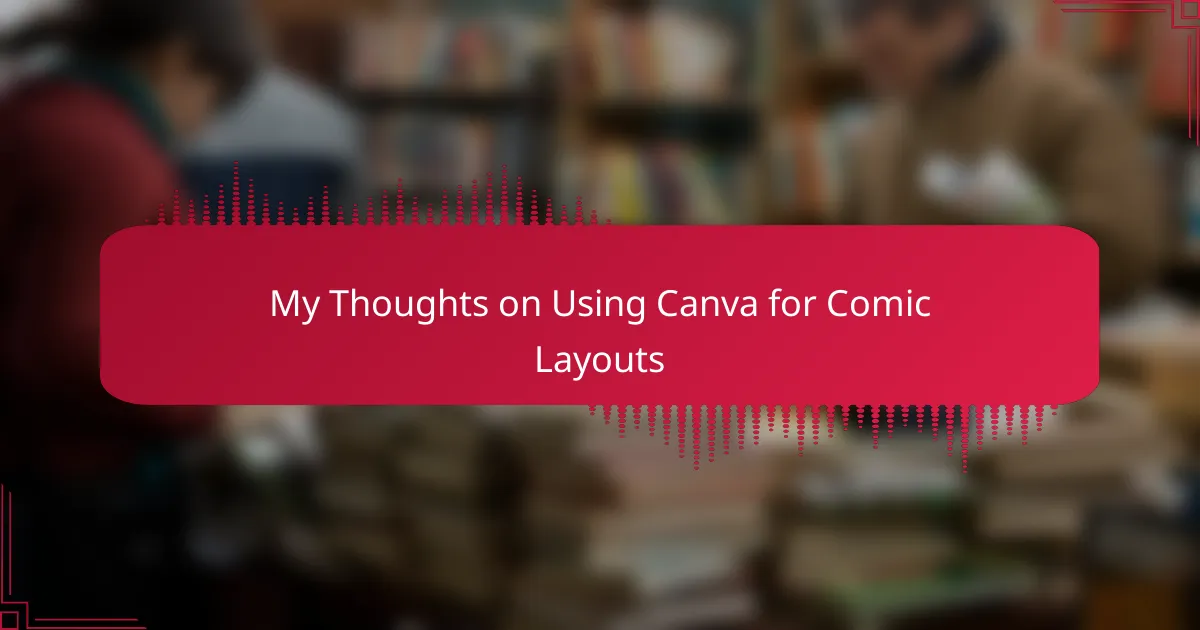Key takeaways
- Comic book layouts are essential for storytelling, influencing narrative flow, emotional engagement, and overall reader experience.
- Planning layouts can enhance panel composition, streamline production, and encourage creative exploration.
- Canva is a user-friendly design tool that simplifies comic creation with customizable templates, easy collaboration, and drag-and-drop functionality.
- Maximizing Canva’s potential involves utilizing features like the grid tool, layering, and diverse fonts to create unique and engaging comics.
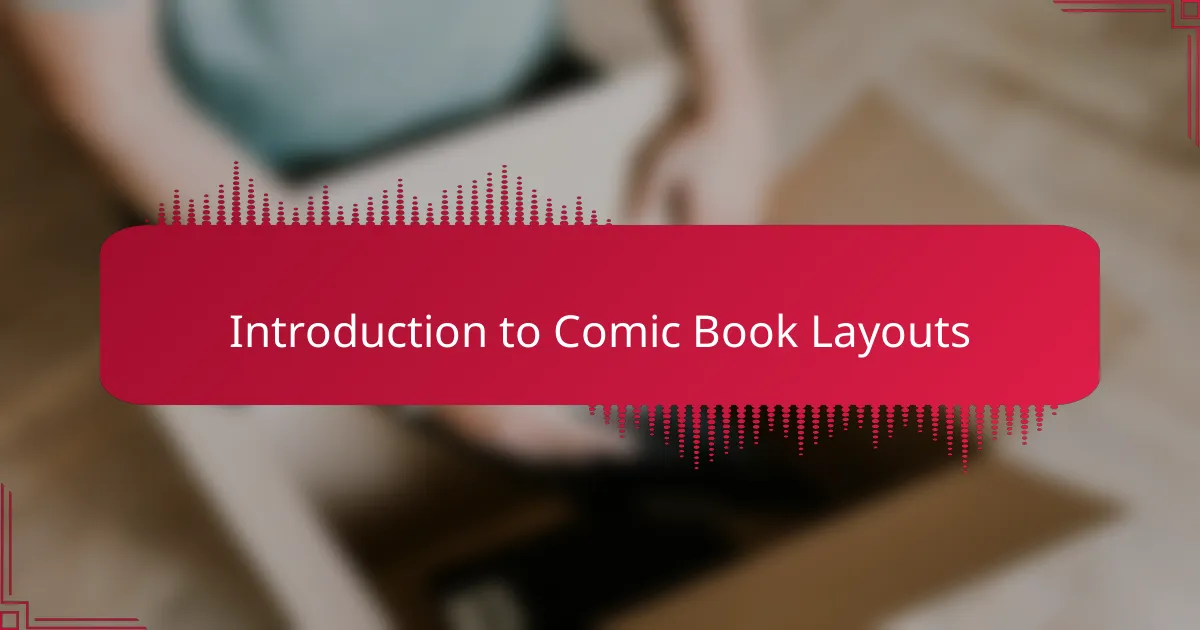
Introduction to Comic Book Layouts
Comic book layouts are the backbone of storytelling in comics. They guide the reader’s eye and allow the narrative to flow seamlessly from one panel to the next. I still remember the excitement I felt when I first tried to create my own layout; it was like piecing together a puzzle where each part needed to fit just right to convey the story effectively.
The arrangement of panels, the pacing of the scenes, and the interplay of art and text are crucial in comic layouts. Have you ever paused to appreciate how a well-structured page can elevate the emotional impact of a scene? That’s something I often consider when I design my layouts; it’s all about creating moments that resonate with the reader.
Understanding comic book layouts can be overwhelming at first, but it’s incredibly rewarding. I’ve found that experimenting with different approaches led to my most creative breakthroughs. Each layout presents a unique challenge, but it also offers a chance to express your storytelling style and connect with your audience on a deeper level.
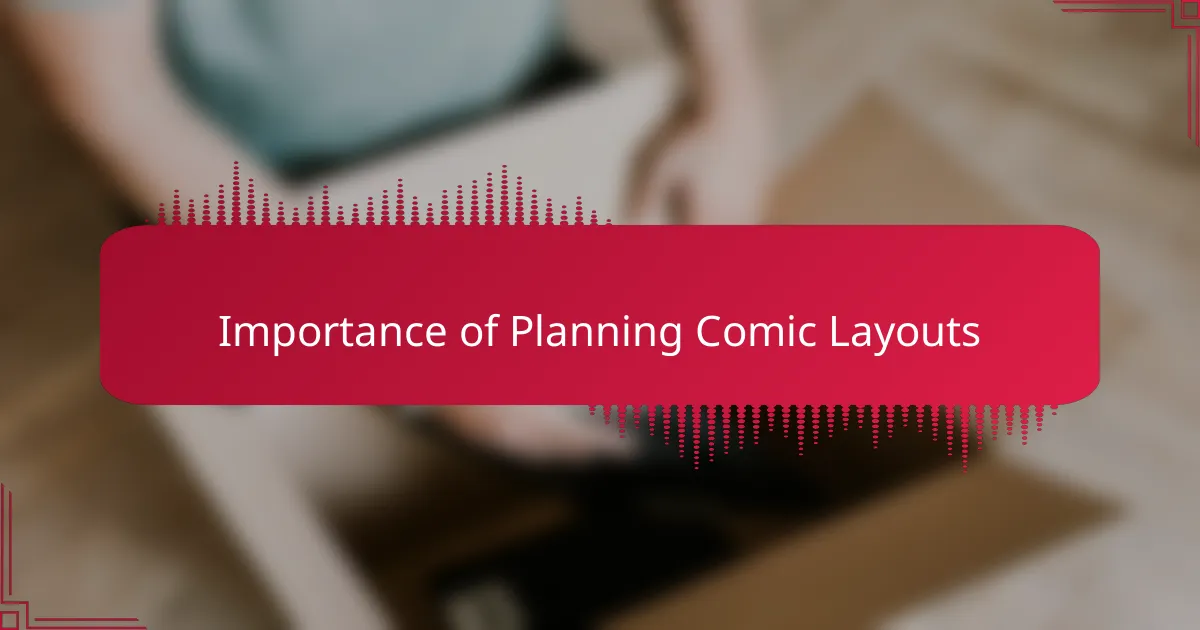
Importance of Planning Comic Layouts
When I first delved into comic creation, the planning of layouts felt overwhelming. However, I quickly realized that a well-thought-out layout is crucial in guiding the reader’s eye through the story. It helps maintain a flow that not only engages them but also enhances the emotional impact of each panel.
The importance of planning comic layouts cannot be overstated. It allows creators to strategize how dialogue and visuals interact, ensuring that every element serves the narrative. From my experience, using tools like Canva helps visualize and experiment with different layouts before committing to final artwork.
- Establishes a Clear Narrative Flow: A planned layout directs reader attention, ensuring they grasp the story progression effortlessly.
- Enhances Panel Composition: Effective layout planning helps in balancing visuals with textual content, making pages aesthetically pleasing.
- Facilitates Emotional Engagement: By determining how scenes are placed, creators can enhance tension or humor in their narratives, enriching reader experience.
- Saves Time in Production: A clear blueprint minimizes the back-and-forth during drawing, leading to a smoother production process.
- Encourages Creativity: With a solid layout plan, you can freely brainstorm and innovate without the fear of derailing your narrative.
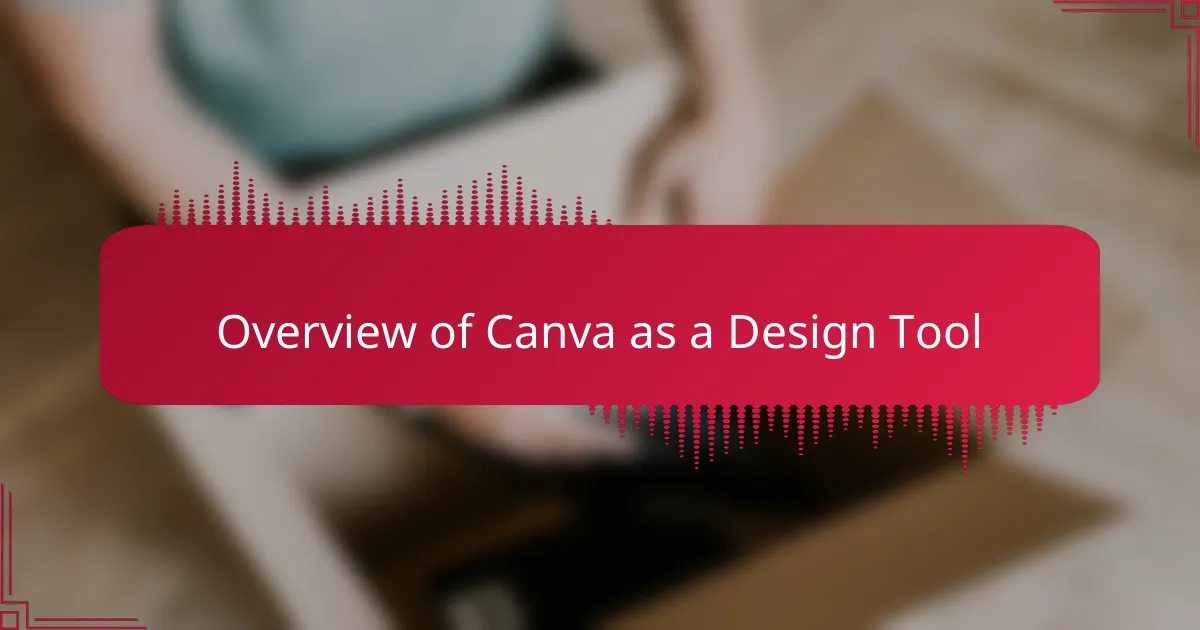
Overview of Canva as a Design Tool
Canva has become a favorite design tool for many creatives, including comic book authors. Its user-friendly interface allows anyone, regardless of their design experience, to create visually appealing layouts quickly. I still remember the first time I explored its features; I was amazed at how easy it was to drag and drop elements and adjust them to my liking.
One detail that stands out is Canva’s extensive library of templates and graphics. These resources can significantly speed up the comic creation process. I often find myself browsing through their options, which sparks inspiration that I didn’t know I needed.
Here’s a comparison of Canva with another popular design tool, Adobe Illustrator, which many comic authors also consider:
| Feature | Canva | Adobe Illustrator |
|---|---|---|
| User-Friendly | Yes, ideal for beginners | Steeper learning curve, more complex |
| Templates | Thousands available | Limited templates |
| Cost | Free and affordable options | Subscription-based |
| Collaboration | Easy sharing and teamwork | Less straightforward collaboration tools |
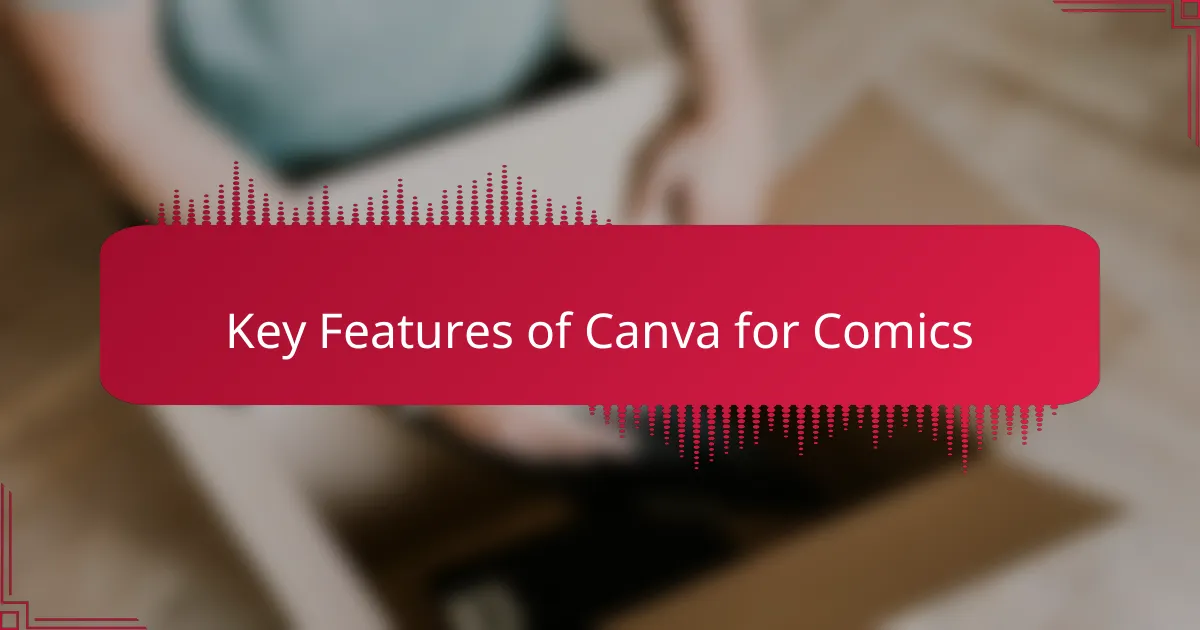
Key Features of Canva for Comics
Canva offers a variety of key features that make it particularly useful for comic creators like myself. One feature I especially appreciate is the drag-and-drop functionality, which allows me to easily arrange my panels without feeling overwhelmed. Have you ever started a project and wondered how to best position your artwork? With Canva, I can experiment quickly, adjusting elements until they feel just right.
Another standout feature is the library of customizable templates specifically designed for comics. These templates provide a solid starting point, which is fantastic when I’m grappling with creative blocks. I often scroll through them, and suddenly, I feel inspired to explore new styles or perspectives I hadn’t considered before.
Moreover, the collaboration tools in Canva make sharing ideas with fellow creators a breeze. I can invite others to view or edit my designs, fostering a creative dialogue that enhances my work. It’s like having a brainstorming session without the logistical difficulties. Isn’t it amazing how technology can facilitate our artistic processes?
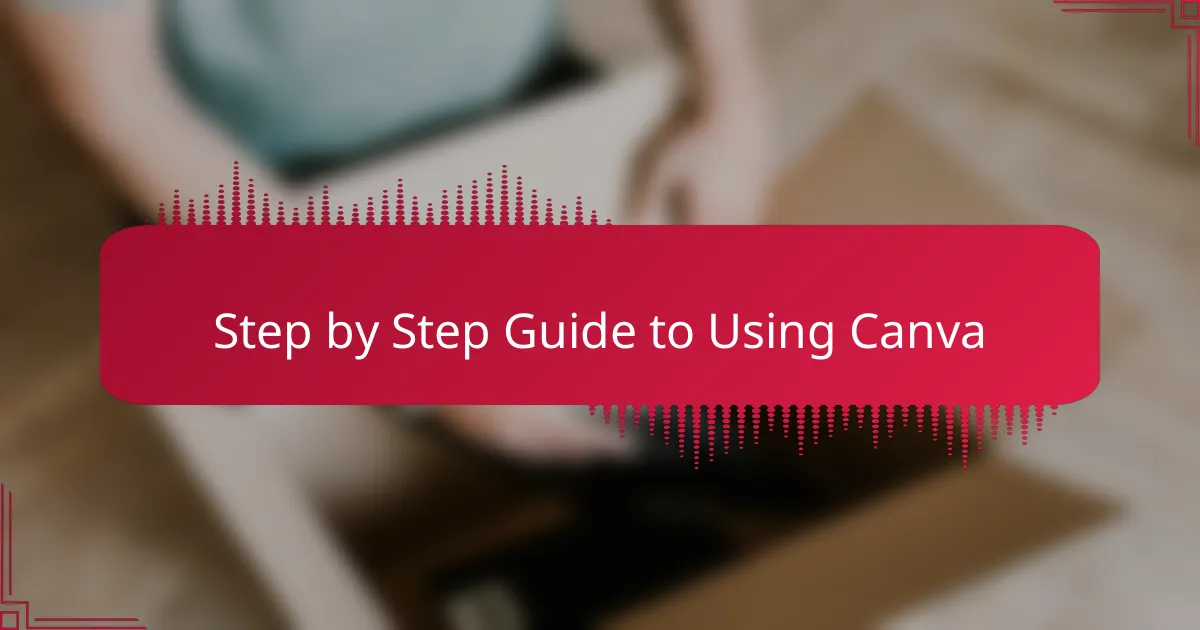
Step by Step Guide to Using Canva
When I first began using Canva to create my comic layouts, I was amazed at how user-friendly the platform is. Navigating through its features felt intuitive, even for someone like me who wasn’t a seasoned graphic designer. The wide array of templates offered a fantastic starting point, relieving some of the pressure that comes with creating something from scratch.
Here’s a simple step-by-step guide to help you get started with Canva for your comic layouts:
- Create an Account: Sign up for free on Canva’s website. You’ll find options for paid upgrades later, but the free tier has sufficient features for beginners.
- Explore Templates: Search for comic book templates in the design types. You’ll see various layouts suitable for different storytelling styles.
- Customize Your Layout: Click on the elements you want to change—colors, text, and images. Feel free to experiment until it feels right.
- Add Your Own Art: Upload original artwork or illustrations to incorporate a personal touch that resonates with your style.
- Download and Share: Once satisfied, download your comic in your preferred format, whether for print or digital sharing.
I remember how thrilling it was to see my characters come alive on screen. Canva truly helped streamline that creative process for me.
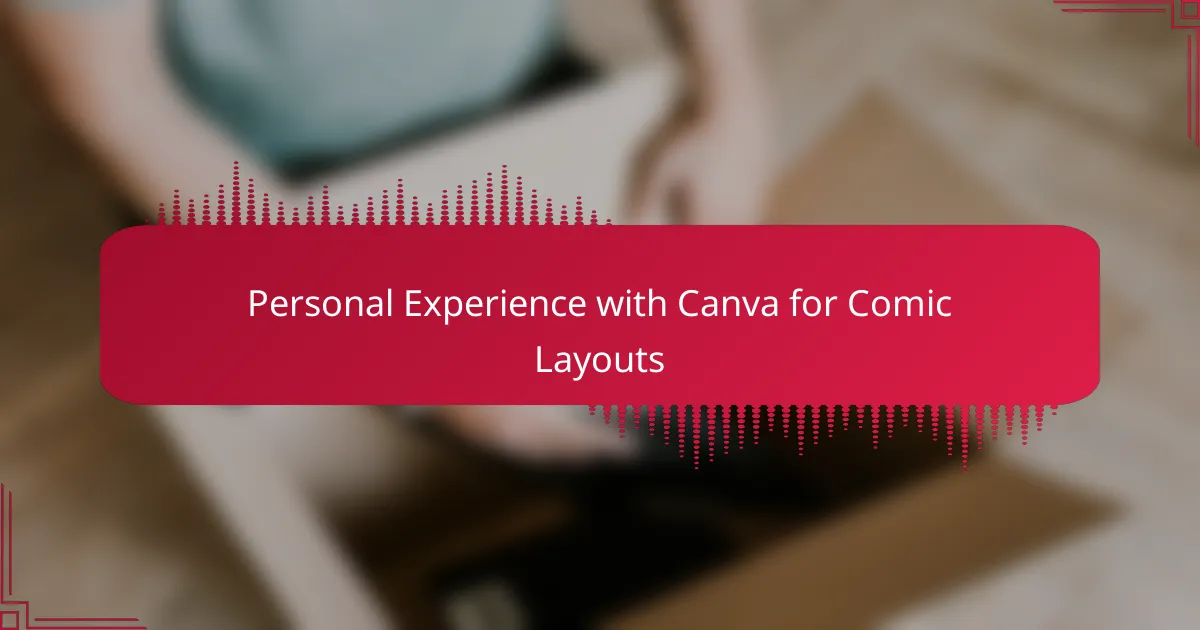
Personal Experience with Canva for Comic Layouts
Using Canva for my comic layouts has been a transformative experience. I remember the first time I opened the platform, feeling overwhelmed yet excited. The multitude of templates and design options made it easy to experiment with different styles until I found what resonated with my storytelling.
One feature that truly stood out to me was the drag-and-drop interface. It’s not just user-friendly; it genuinely boosts creativity. I’ve spent hours just rearranging panels, playing around with colors, and adjusting layouts, which has led to some of my most engaging work. I’ve found that the ability to visualize elements in real-time helps me catch mistakes I might not notice on paper.
Here are some specific advantages I’ve experienced using Canva for comic layouts:
- Wide range of customizable templates for various comic formats.
- Easy access to a library of graphics, icons, and fonts which can enhance storytelling.
- Ability to collaborate with others in real-time, making feedback sessions much more efficient.
- Export options that cater to different publishing needs, whether for web or print.
- A community hub for sharing designs that often sparks further creative inspiration.
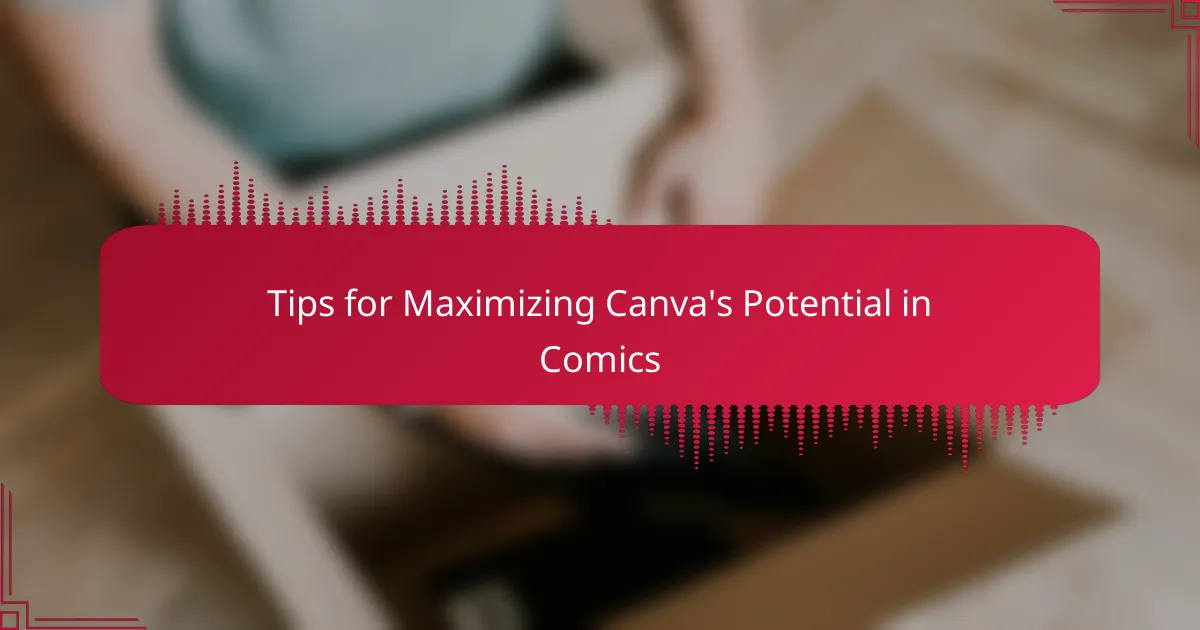
Tips for Maximizing Canva’s Potential in Comics
When I first started using Canva for comic layouts, I was amazed at how intuitive it was. One tip that really helped me was mastering the grid tool. By dividing your page into a grid, I could easily plan my panels and ensure my story flowed seamlessly from one to the next.
Another feature I found invaluable is the ability to use layers. Layering elements allowed me to experiment with different compositions without losing my original work. It saved me time and frustration, which I remember vividly when I was working on my first comic. I could just duplicate a page and try out different layouts until I found the one that resonated with my vision.
Lastly, don’t hesitate to utilize the vast library of fonts and illustrations Canva offers. Mixing and matching these elements can add personality to your comic, making it truly unique. I often explore different styles until I discover a combo that electrifies my narrative—it’s like going on a creative treasure hunt!
| Feature | Benefits |
|---|---|
| Grid Tool | Aids in panel layout and organization |
| Layering | Facilitates composition experimentation |
| Fonts and Illustrations | Adds uniqueness and personality |
